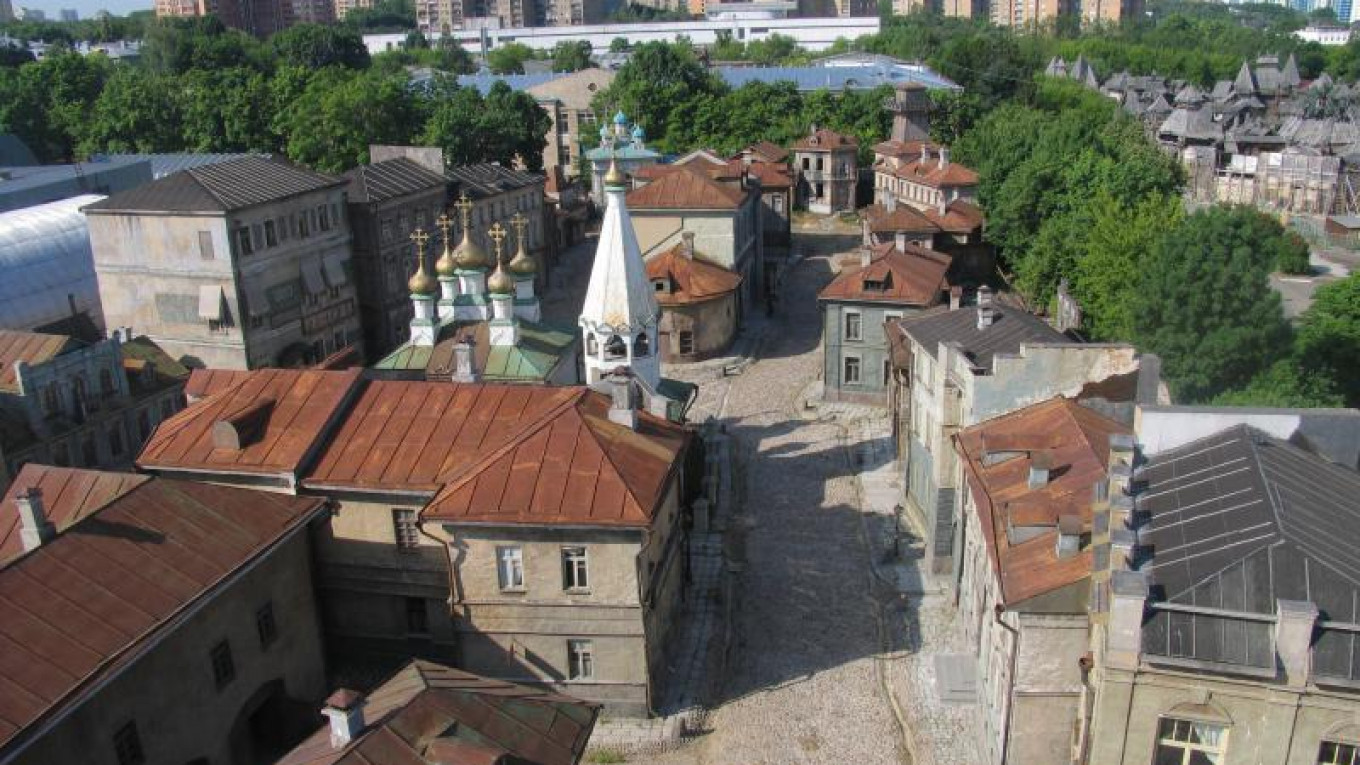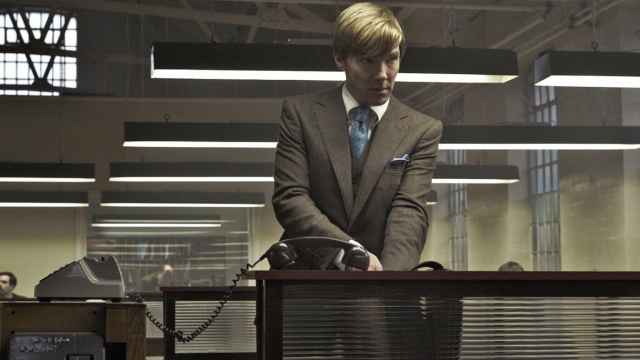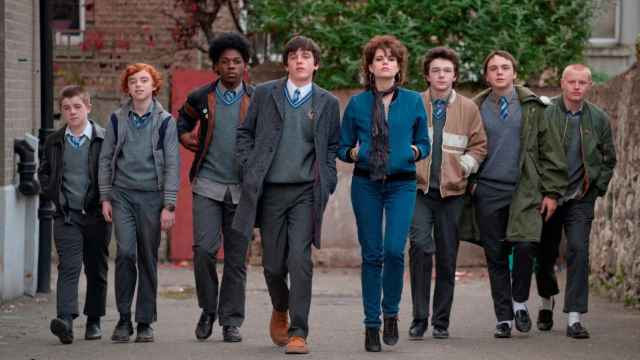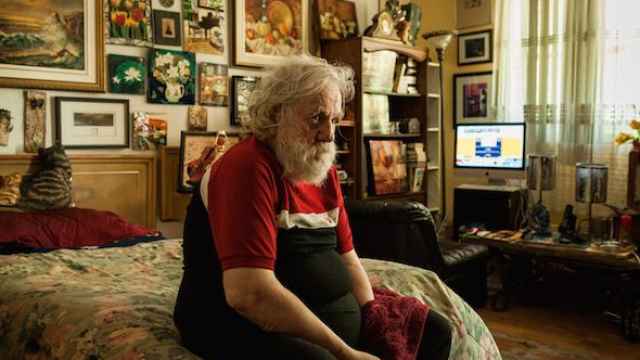A watchtower looms over an empty cobblestone street, guarding the two-story wooden houses and ancient churches from fire. Orthodox crosses gleam in the sunlight, while pastel-painted plaster hides behind layers of soot. All that is missing is the people.
This is Moscow in its former glory, before the Great Fire of 1812 destroyed most of the city. As long as you are careful not to peek around the corners, the illusion holds. But step back and you realize where you are — a movie set.
Every day, the Mosfilm Museum leads groups on a whirlwind tour through its 34.5-hectare site in southwest Moscow. Here visitors can admire the breathtaking period sets, sound stages, and extensive costume and prop collection. Unlike a normal museum with historical pieces, Mosfilm’s collection is “active,” meaning that film crews can borrow and return exhibition pieces as needed.
Yelena Morozova, head of the Mosfilm Museum, says this happens frequently. Last year, when Russian-Armenian director (and Mosfilm head) Karen Shakhnazarov shot a new version of “Anna Karenina,” he borrowed all of the carriages in one of the main halls.
“A group came for the tour,” Morozova told The Moscow Times, “but all of the exhibits were gone!”
A working studio
Approximately 1,000 people work at Mosfilm full-time, although in its Soviet heyday, there were up to 5,000 full-time cinema staff. These days, the on-site population can vary greatly, depending on studio schedules.
“Sometimes it’s emptier than empty,” says Morozova, “Then, there may be whole crowds, people running around.”
In the busy periods, tour groups might catch groups of actors in costume. The tour route also changes, depending on which sound stages are in use, as tours pass through the main building, with 13 shooting pavilions.
Most guides will lead the group into a small room housing an Orthodox church set. The space faithfully imitates the iconostasis, golden crosses, icons—some real, some imitations. The set even replicates the desk where old ladies sell candles and other items. The only thing missing is the roof—the church set is open on top so that the crew can shine bright lights onto the actors’ faces.
Something for everyone
The museum’s five exhibition rooms hold props and costumes for every taste, from weaponry to masks and wigs. Keen-eyed visitors might recognize the iconic “gazirovka” soda-water machines that appear in the 1965 comedy “Operation Y and Shurik’s Other Adventures.”
Those who don’t know Soviet-era films well can appreciate the collection of old cars, which are kept in pristine condition, and which you are unlikely to see elsewhere. For example, the museum holds a GAZ AAMPZ-1, a 1934 fire truck used in the 1971 adaptation of Ilf and Petrov’s “12 Chairs.”
A third room is dedicated to the art of masking—death masks line the walls, across from a collection of wild-colored wigs used in sci-fi movies. The best section documents an actor’s transformation into a ghoul through make-up and prostheses.
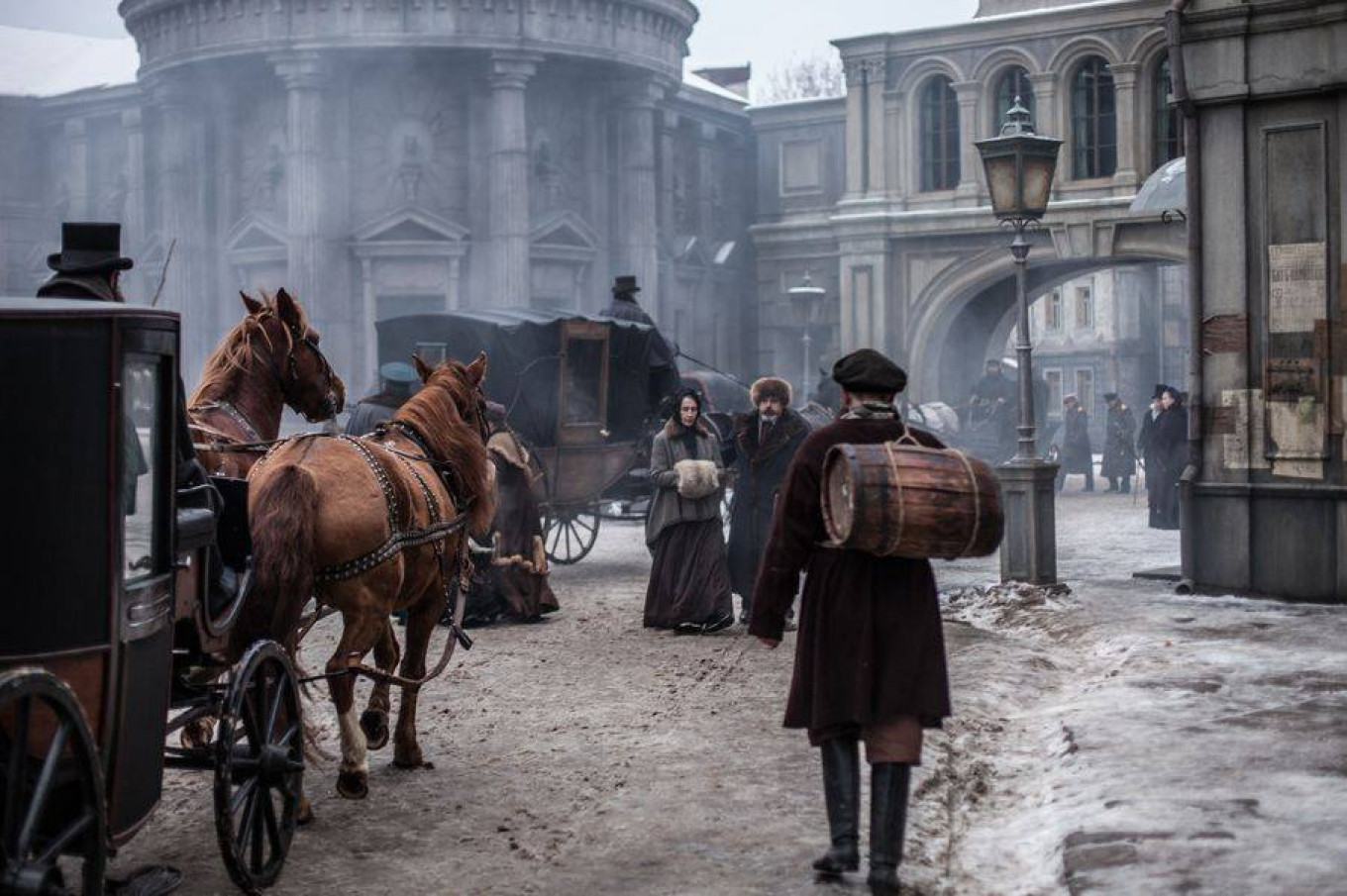
The Soviet-era set pieces, the props, costumes, and set pieces for Shakhnazarov’s new version of Tolstoy’s “Anna Karenina” appear again and again throughout the tour. Anna’s elegant 19th-century dresses and carriages illustrate the luxury of the mid-19th century aristocratic life. The swords, guns, and an early machine gun loaded onto a carriage from the battle scenes demonstrate how those aristocrats later paid for their high life (Mosfilm commissioned 3,000 costumes for the shoot.)
A living museum
For “Anna Karenina,” Shakhnazarov added an “Old Petersburg” street next to the “Old Moscow” set, built 30 years ago. Guests walk through the stunning replica, surrounded by neo-classical mansions, Roman columns, and rectangular stone masonry. The whole street is made from wood and painted to look dirty from the coal-fired stoves that kept St. Petersburg warm.
According to our guide, the “old Moscow” street set has been used in so many Mosfilm movies that it has more than recouped the initial outlay of $600,000. The false street has shaped a generation’s imagination of what Moscow must have looked like long ago.
Guests can book 1.5-hour excursions through the Mosfilm website or through many city tour agencies. Tours in English and French are available, but be sure to call ahead, so that the museum can locate an appropriate guide. Expect a journey.
“You can be transported to another town, another country, a space station, another planet,” says director Morozova, and “this can be achieved just by stepping from one set onto another.”


